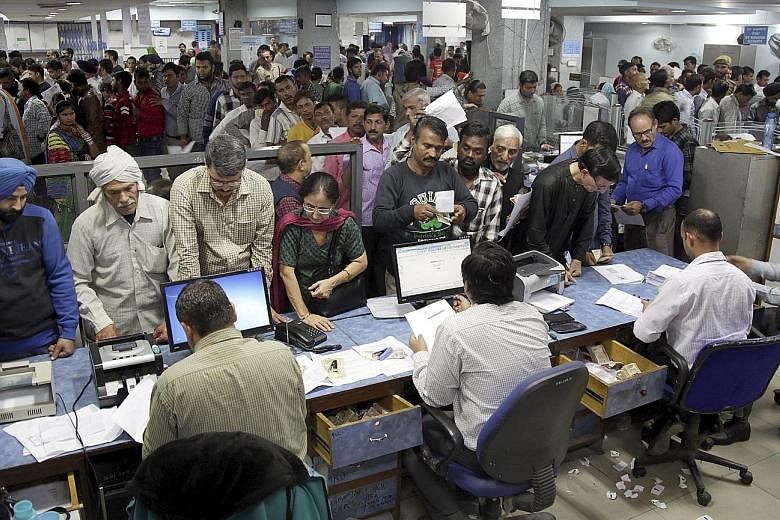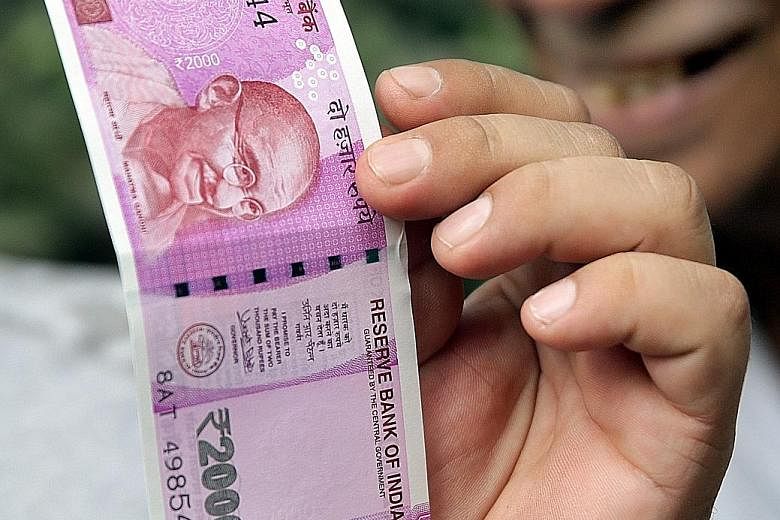NEW DELHI/MUMBAI • Indian banks called in thousands of police officers yesterday to manage huge queues outside branches, as people tried to exchange banknotes abruptly pulled out of circulation by Prime Minister Narendra Modi in a crackdown on "black money".
Mr Modi announced the shock move on Tuesday night to ditch 500- and 1,000-rupee notes - worth a combined US$256 billion (S$360 billion) - that he said were fuelling corruption, being forged and even paying for attacks by Islamist militants against India.
Lines formed before banks reopened after being shut on Wednesday to prepare for the change, as people tried to swop the worthless cash for smaller bills or new 2,000- rupee notes being rushed into circulation and made to be harder to counterfeit.
Some people frustrated by the long wait got into arguments at Canara Bank near the Parliament building in New Delhi, as people barged into queues that wound through the branch and on to the street outside.
"Why is there no one here to manage anything?" shouted one man, as he jostled with others in the line.
Branch manager S.K. Verma, unable to get through to the local police station, called an emergency hotline for help. "I want two policemen outside my branch!" he said.
Twenty police officers stood outside a nearby outlet of the Reserve Bank of India, the central bank, letting in a few customers at a time.

Economists and some businesses, especially those involved in cashless payments, have welcomed the "demonetisation" scheme as a vital step towards broadening the formal economy and improving tax compliance.
But it has disrupted the daily lives of hundreds of millions of Indians who live in the cash economy that is estimated to account for a fifth of India's US$2 trillion gross domestic product and who have low confidence in banks or plastic cards.
In southern India, a farmer reportedly committed suicide, fearing she would be left penniless after Mr Modi's move.
Fresh produce prices dropped sharply in food markets as people ran out of cash, or vendors were unable to give change, while the government ordered hospitals and filling stations to accept the old money for a few days longer.
Although a few people were able to exchange their old money for new notes, there were strict caps on account withdrawals and most came away with bundles of lower-denomination bills.
People were allowed to make a one-time exchange of 4,000 rupees (S$84) in cash and one-time account withdrawals of 10,000 rupees, capped at 20,000 rupees per week. Cash dispensers remained closed and are due to reopen today.
The old 500-rupee and 1,000- rupee notes - until now India's highest-denomination bills - accounted for 86 per cent of all cash in circulation, analysts at Citi have estimated.
In TV interviews, Finance Minister Arun Jaitley defended the switch, saying India was moving to a "cleaner system".
He rebutted criticism that the government was resorting to arbitrary and authoritarian methods of running the economy.
But he said it would take two or three weeks for new 500- and 2,000-rupee notes to be put into circulation, replacing old notes that can be exchanged until Dec 30.
REUTERS, AGENCE FRANCE-PRESSE


